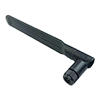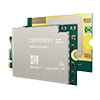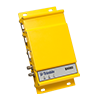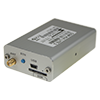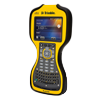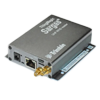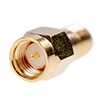In our articles we oftentimes mention IoT and the various ways to connect a variety of devices and sensors. But now we have decided to create the essential thing for this technology. And that is the various IoT networks that can be found in the Czech Republic. Let us introduce the main ones.
Network SigFox
SigFox is one of the most widely used IoT networks in the world. It is operated in the Czech Republic by SimpleCell in cooperation with T-Mobile. T-Mobile provided SimpleCell with its infrastructure to build base stations for SigFox signal transmission. SigFox operates in the 868 MHz license-free band, which can broadcast over long distances. Now in 2020, SigFox covers about 94% of the territory in the Czech Republic.
The communication between SigFox is highly-secured, because only one owner can access it at the time.
Each Sigfox device must include a communication chip (also called a modem) that allows communication with the Sigfox network. The modem contains neither a SIM card nor an IP address. Each device is uniquely identified in the network using the unique 32-bit Sigfox ID that is assigned at the factory. The ownership of the device is transferred online using the PAC (Porting Authorization Code). This code is communicated to the buyer at the time of purchase and is regenerated when the device is registered.
Speaking of communication, devices in this network operate at a lower bit rate, in the order of 100 bit / s, while being also limited to 144 messages per day. It allows only one-way communication. Reverse communication can only be activated on request by the terminal. Thanks to these limitations, the battery life can reach up to 5 - 15 years as standard.
Therefore, the SigFox network is used for sending simple messages. It is suitable where a lot of sensors are needed for a low price (the communication chip can be purchased for 2 dollars) especially in places where real-time transmission is not necessary. These sensors can be found in fields such as smart energy, smart parking and anywhere where there is no need for real-time data.
The Sigfox network has the ability to communicate over long distances, which means that devices can be located in remote locations and still be able to connect to the network.

SigFox network architecture
Network LoRa
Like SigFox, LoRa (also LoRaWAN) is a radio technology for transferring small amounts of data. It emphasizes very low energy consumption. LoRa batteries can last up to 10 years.
Sensors, readings, PIR sensors or thermometers have very low power consumption. Conversely, for example, GPS location consumes more energy. Another aspect that affects battery life is the number and size of messages sent per day, location (the effect of temperature on battery life), and last but not least, the type and size of the battery.
Similar to SigFox, Lora works in the 868 MHz band but does not have the same coverage. LoRaWAN coverage reaches up to about 70% in the Czech Republic. Unlike SigFox, however, this technology is capable of achieving higher transfer rates, ranging from 0.3 kbps to 50 kbps, and there is no limit to the number of messages a device can send per day. However, the price of the communication chip can climb up to twice the price of SigFox chips. Security is done through comprehensive encryption, and it is possible to create a private LoRa network only for a designated area, such as a factory or a parking lot. LoRaWAN technology can be used in many different fields and also where SigFox technology is possibility.
While Sigfox was suitable wherever one-way communication with a 10-minute period was sufficient, LoRa allows two-way communication and is therefore suitable for reading and writing. So LoRa is not only suitable for reading and sensing various variables such as temperature, humidity, pressure, CO2 or energy consumption, but there are LoRa devices available, that allow remote control of other device. For example, LoRa devices can contain analog or digital outputs through which terminals can be controlled.

LoRa network architecture
Network NB-IoT
Narow Band IoT, or NB-IoT, is a technology that uses the LTE band and can be deployed to existing transmitters and receivers only through a simple software change. There is no need to purchase and install any additional hardware. The mobile operators O2 and Vodafone, who are building the czech network, have used their existing transmitters and within a short period of time have achieved highly reliable coverage almost throughout the entire Czech Republic. Vodafone promises 100% coverage already.
The device must be able to read the SIM card, whether it is a built-in eSIM or a classic SIM reader. However, it is a small price in exchange for use of this narrowband network with very low energy consumption. NB-IoT also offers higher bit rates, more advanced security, lower interference rates thanks to the licensed band, and especially two-way transmission of higher data volumes than LoRa and SigFox. NB-IoT devices can also be configured for low power consumption and can last for several years just like SigFox or LoRa. In terms of cost, devices are a bit more expensive than LoRa or SigFox technology, but this cost is constantly decreasing over time.
In addition to conventional applications such as reading and measuring various quantities or monitoring waste in containers, NB-IoT devices are suitable for cases where more frequent and bidirectional communication is required. Such cases include, for example, shipment tracking, wearable technologies (such as smart watches or smart bicycles) or agricultural applications.

NB-IoT network architecture
For more information, you could read this interesting article from which the blue quotes were used: https://elektro.tzb-info.cz/informacni-a-telekomunikacni-technologie/16519-site-pro-internet-veci-v-ceske-republice.
